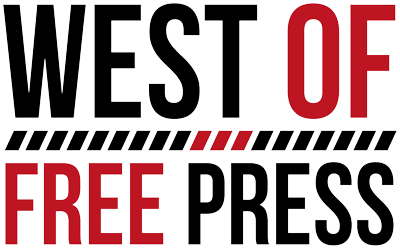Part of writing West Ashley Flashback is discovering the bits and pieces of a community’s history. The fun begins when the one-liners became a paragraph, then finding the right piece to complete the whole jigsaw puzzle of a story.
For example, in several publications there are ads for dining establishments like The Sugar Bowl, Byrnes Downs Grill, or Red and Bertha’s. Where exactly were they located along Savannah Highway in the Avondale area? Were they popular hangouts? What kind of food did they serve? Was there a particular dish or specialty of the house? A few stories have emerged about these places but not enough to finish the puzzle. For example; Frank Shine worked as a short order cook in the Byrnes Downs Grill.
Or what about the skating rink located on the site where nowadays A Taste of India serves Indian food? One resident of Byrnes Downs has told stories of skating at the rink and when it closed it was converted to Portaro’s restaurant, but skating must have been more popular than one or two stories?
Did anyone have fun at the putt-putt golf on Savannah Highway?
Still trying to nail down exactly when the railroad stopped running along the track that is now the West Ashley Greenway?
The All-American outfielder and professional baseball player, Ty Cline was a three-sport athlete at St. Andrew’s Parish High School. He later owned three Baskin-Robbins stores. One of which was in West Ashley and decorated with his baseball memorabilia.
The modern establishment, “The Roost,” is located in the building where Frank and Eleanor Soubeyroux ran a pet store called “The Kongo.” The address then was 175-B Savannah Hwy.
In 1953 there was strong opposition to the construction of the South Windermere Shopping Center. A letter to the editor of The News and Courier about zoning in the suburbs suggested it would reduce the property values in the adjacent neighborhoods. However, Claire Nussbaum commented in my interview with her how “incredibly wonderful to live with the convenience’s in the shopping center next to the neighborhood.”
In 1961 the stores of St. Andrews Center published “Famous Charleston Recipes”. This collection included information about the individual stores in the Center, recipes, and discount coupons.
J M Fields in the Ashley Plaza Mall had a soda fountain bar.
Mrs. Till ran a kindergarten out of her home at 23 Riverdale in Avondale.
Mrs. Waring ran an “egg factory” and sold flowers to help with the cost of maintaining her property that would later become the site of Charles Towne Landing.
Roy Hart served a lot of memorable food including ham salad sandwiches. If you had a red star on your ticket when it was printed from the cash register, your order was free.
The Wessel family lived in the home located on the farmland that became South Windermere neighborhood and shopping center.
The Crull family opened Charleston Hardware Co. on Wappoo Road.
The cabins that housed the farm laborers, located along Savannah Highway on the Voorhees property (later Harrison Acres) were known as Red Row because they were painted a dull red color. Red Row was torn down in April of 1947. E. W. King, Jr. farmed the land under Mr. Harrison’s ownership.
Frank Mathews was credited with “excellent photographs” in the October 1943 brochure published by the Exchange Club of St. Andrew’s Parish. Any ideas what became of these original photographs?
After WWII ended, Supper clubs and Boy Scout troops meet in the hall that was located on the POW camp prior to it being torn down.
Charles J. Ravenel was the proprietor of St. Andrew’s Riding Academy on Old Town Road according to the ad in the October 1943 brochure published by the Exchange Club of St. Andrew’s Parish.
Who remembers Gus and Frazzie (unsure of spelling) Brown? They lived on the Voorhees property.
There are two Jewish Cemeteries along Sycamore Drive: the walled cemetery of the Orthodox Synagogue and the Conservative Synagogue that began in 1947. They share a common wall. Leon Steinberg purchased the land for the Conservative Synagogue and developed the Magnolia neighborhood on the land adjacent to this cemetery.
In 1932, Alexander Sprunt, Jr. started recording “Siskaya The Crescent St. Andrew’s Parish A Book of the Place and its History Planned and executed by Alexander Sprunt, Jr.” He broke ground in December of 1932 on this home that looks today as it did in the photographs he took during his documentation of construction.
One of the more curious pieces is found on the 1916 plat that Rene Ravenel prepared for Joe Harrison prior to his purchase of the land that is now Moreland, Moreland Shopping Center, Westwood and Byrnes Downs. It’s a drawing of an “Old Fort” at the bend in the “Public Road” as it comes off the “New Bridge”. Not one story has emerged about this structure. One clue has recently emerged, though. The Charleston Evening Post and the News and Courier did a Series of Civil War Editions. In the third series published June 15-16, 1962 there is a map of central Charleston County with forts notated. Fort Barnes (Condition: Gone) is notated in roughly the same position as the illustration on the 1916 map – one more clue in this mystery.
Do you have a piece of the puzzle? If so contact Donna Jacobs at westashleybook@gmail.com.
(843) 766-WEST (9378)
publisher@westof.net







